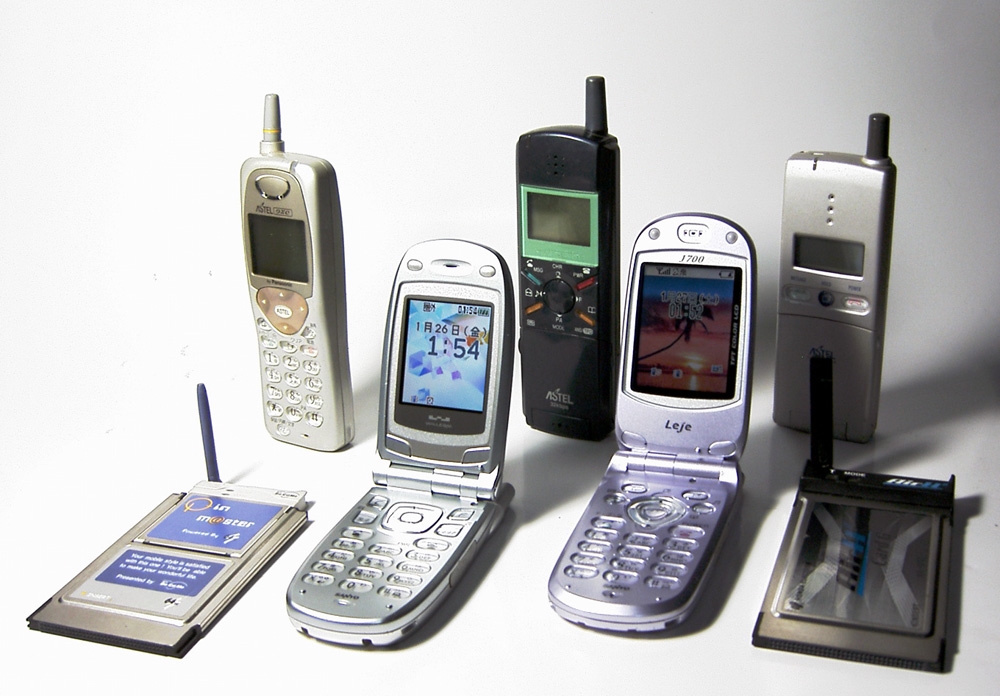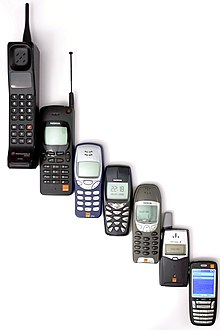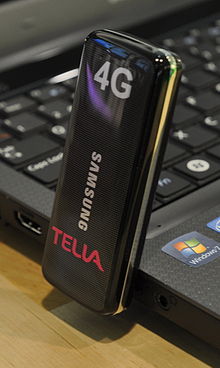Mobile Phone Company and Their Share Market In The World-

Some mobile phones

Siemens AX72.
A mobile phone (also known as a wireless phone, cell phone, or cellular telephone) is a little portable radio telephone.
The mobile phone can be used to communicate over long distances without wires. It works by communicating with a nearby base station (sometimes called a "cell") which connects it to the main phone network.
As the mobile phone moves around, if the mobile phone gets too far away from the cell it is connected to, that cell sends a message to another cell to tell the new cell to take over the call.
This is called a "hand off," and the call continues with the new cell the phone is connected to. The hand-off is done so well and carefully that the user will usually never even know that the call was transferred to another cell.
As mobile phones became more popular, they began to cost less money, and more people could afford them. Monthly plans allowing people available for rates as low as US$30 or $40 a month. Cell phones have become so cheap to own that they have mostly replaced pay phones and phone booths except for areas with a lot of people.
As well as making voice calls, mobile phones can be used for other things:
- Sending and receiving emails, text and multimedia messages
- Registering contacts
- Using calculator, currency, alarm, etc. functions
- Internet
- Playing games
- Taking photos and videos
History-

An evolution of mobile phones
Smartphones-
The latest mobile phones are commonly referred to as smart phones. These phones can be used for email, browsing the internet, playing music and games, and many other functions that computers can perform. This is because they basically are small computers.Older phones also used computer technology, but lacked many of the parts of a computer that were too big to fit into a phone. Modern phone makers have been able to make computer parts small enough to fit inside a phone.
Advancements have also been made in the field of data communication. Smart phones can send and receive data much faster than older phones. The industry uses different standards to label the data transmission rates. 2G was introduced in 1991.
2G means 2nd Generation. 2G phones transmit data at about the same speed as a 56kbps (kilabits per second) dial-up modem would get. 3G was introduced in 2002. 3G phones vary in speed, but range from about 200kbps to 14mbps (megabits per second).
This is comparable to a DSL or low end Cable Modem's speed. Most smart phones use 3G technology because 2G is not fast enough to practically use e-mail, internet, and other data features. A new Generation of technology is being introduced now called 4G.
4G speeds are estimated to be as fast as 100mbps to 1gbps (gigabit per second). This would be as fast as some computer networks that use ethernet. The newest smart phones use 4G technology.
In Q1 2011, Apple surpassed Nokia as the world's top handset vendor in revenue and Nokia market share drop continuously to 29 percent in Q1 2011 as the lowest level since the late 1990s.
In June 2011, Nokia has also announced that in Q2 2011 the sales and margins are expected to be much lower than anticipated due to global competition in both low-and-high end markets.
At April 6, 2011 market capitalization of HTC surpassed Nokia with $33.8 billion over $33.4 billion respectively. The credit agency was also downgraded Nokia's debt from A2 to A3.
Market share of world's top 5 mobile vendor:
| Source | Date | Nokia | SAMSUNG | LG | Apple | ZTE | Others | References |
|---|---|---|---|---|---|---|---|---|
| Gartner | Q2/2011 | 22.8% | 16.3% | 5.7% | 4.6% | 3.0% | 35.8% | |
| IDC | Q2/2011 | 24.2% | 19.2% | 6.8% | 5.6% | 4.5% | 39.7% |
4G predecessors and discontinued candidate systems-
3GPP Long Term Evolution (LTE):

Telia-branded Samsung LTE modem
The pre-4G technology 3GPP Long Term Evolution (LTE) is often branded "4G", but the first LTE release does not fully comply with the IMT-Advanced requirements. LTE has a theoretical net bit rate capacity of up to 100 Mbit/s in the downlink and 50 Mbit/s in the uplink if a 20 MHz channel is used — and more if multiple-input multiple-output (MIMO), i.e. antenna arrays, are used.
The physical radio interface was at an early stage named High Speed OFDM Packet Access (HSOPA), now named Evolved UMTS Terrestrial Radio Access (E-UTRA). The first LTE USB dongles do not support any other radio interface.
The world's first publicly available LTE service was opened in the two Scandinavian capitals Stockholm (Ericsson and Nokia Siemens Networks systems) and Oslo (a Huawei system) on 14 December 2009, and branded 4G. The user terminals were manufactured by Samsung. Currently, the two publicly available LTE services in the United States are provided by MetroPCS, and Verizon Wireless. AT&T also has an LTE service in planned for deployment between mid-2011 and end of 2013, Sprint Nextel has stated it's considering switching from WiMax to LTE in the near future.
In South Korea, SK Telecom and LG U+ have enabled access to LTE service since 1 July 2011 for data devices, slated to go nationwide by 2012.
| LTE | |
|---|---|
| Peak Download | 100 Mbit/s |
| Peak Upload | 50 Mbit/s |
Rank | Company | Main Markets | Technology | Proportionate subscribers (in millions)  |
|---|
| 1 |
| 2 | |
| 3 |
| 4 |
| 5 | | 199.610 (Dec 2010) |
Every day we see a new model and new software as far as mobile phone are concerned. There is boom in mobile phone technology.
Now mobile phones are competing with computer and television. And it has become a unique tool where it is substituting computer and television in a single miniature piece. Today mobile phone is capable to access Internet very much as a computer and can download and play a video much like a television.
Mobile phone technology is growing at incredibly faster rate. And now the people are not able to assume- what next? People are finding it difficult to cope up with. The fastest growing industry in the history of mankind and in science has to be mobile phone industry.
Frequently introduction of new computerized phone in the market with latest software and accessories has surprised the people, which they never dreamt. It is not a history but few years' back we remember there was a time when mobile phone concept itself was not born.
Few years back payphone were used and people used to wait in queue for making a call. The first series of mobile phone in the world was analog mobile phones.
It was just like in dream everything changed and mobile phone technology taken a turn to change analog technology into digital technology. People thrown their analog phone and replaced it with a high tech digital one.
Now mobile phones are competing with computer and television. And it has become a unique tool where it is substituting computer and television in a single miniature piece. Today mobile phone is capable to access Internet very much as a computer and can download and play a video much like a television.
Mobile phone technology is growing at incredibly faster rate. And now the people are not able to assume- what next? People are finding it difficult to cope up with. The fastest growing industry in the history of mankind and in science has to be mobile phone industry.
Frequently introduction of new computerized phone in the market with latest software and accessories has surprised the people, which they never dreamt. It is not a history but few years' back we remember there was a time when mobile phone concept itself was not born.
Few years back payphone were used and people used to wait in queue for making a call. The first series of mobile phone in the world was analog mobile phones.
It was just like in dream everything changed and mobile phone technology taken a turn to change analog technology into digital technology. People thrown their analog phone and replaced it with a high tech digital one.
The launch of the new Apple's iPhone 5 in October will push sales growth in the online market for previous iPhone models, according to eBay
A decent Android phone for £99 - Huawei's new Blaze is the company's first under its own brand and it's a pleasant surprise from the Chinese manufacturer
Latest invention of mobile phone industry is - The iPhone. It has just been introduced in the market and whirling the world into its stream. iPhone is sleek in its look and has innumerable features. It is going to make a great impact in the mobile phone industry.
Look! Wonder of modern mobile phone technology.
Nielsen survey claims ‘more UK consumers choose Android smartphones, but many still covet the iPhone’
source-From Wikipedia




You can see here wonder of modern mobile phone technology in the world best mobile phone company and another important information available here.
ReplyDelete